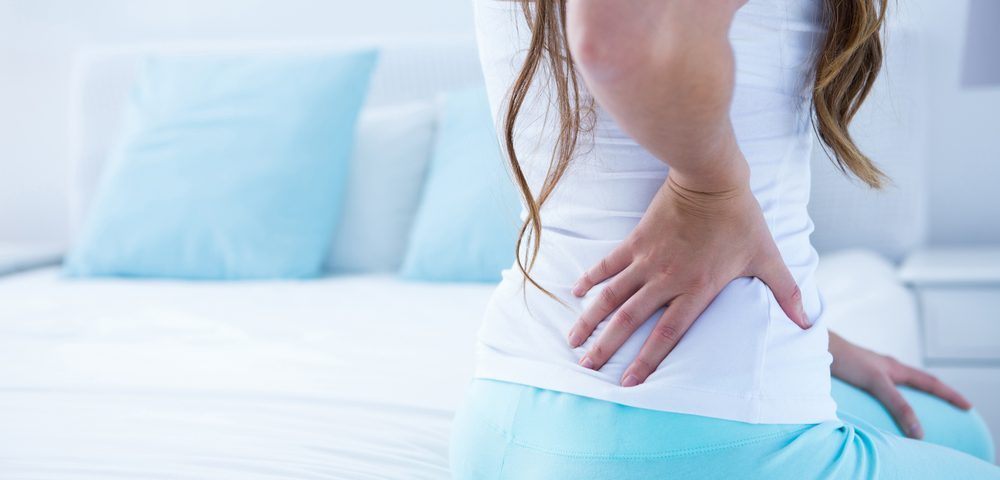The prevalence of ulcerative colitis remained stable in the United States from 1976 to 2010, affecting 1% of the population, according to a survey analysis.
The study also found that about a quarter of patients with inflammatory bowel disease experienced a common form of lower back pain called chronic axial pain, and had more arthritis diagnoses.
The findings were presented in a poster, titled “The US Prevalence of Inflammatory Bowel Disease and Associated Axial Pain: Data from the National Healthy & Nutrition Examination Survey (NHANES),” at the 2019 ACR/ARP Annual Meeting, held in Atlanta.
Patients with inflammatory bowel disease (IBD) can experience axial and inflammatory back pain. They also can exhibit extra-intestinal manifestations, such as spondyloarthritis, a type of arthritis involving the spine and, in some cases, the arm and leg joints.
In this study, researchers compared the rate of axial pain between IBD patients and people without the disease (controls).
They used data from the United States National Health and Nutrition Examination Survey (NHANES), a program of studies designed to assess the health and nutritional status of adults and children in the United States. Specifically, they analyzed data from surveys conducted from 2009 to 2010 (NHANES 2009–10) and 1976 to 1980 (NHANES II).
The surveys asked participants about their clinical history and diagnosis of either ulcerative colitis (UC) or Crohn’s disease (this was assessed only in the NHANES 2009–10 survey), the two main forms of IBD; gastrointestinal symptoms; medical care; and additional conditions, including axial pain and diagnosed arthritis.
NHANES 2009–10 also had questions about pain quality to estimate the prevalence of inflammatory back pain.
The analysis included 5,105 participants from the NHANES 2009–10 survey and 13,730 from the NHANES II, ages 20 to 69 years.
In total, 62 patients in the NHANES 2009–10 survey had IBD (prevalence of 1.2%). The prevalence of UC was 1% in both the NHANES 2009–10 (53 patients) and NHANES II (144 patients), which was similar to what had been previously reported.
“This suggests stable UC prevalence and recognition rates between the two survey time periods,” the researchers wrote.
In the NHANES II survey, UC was higher among women (106 cases) than men (38 cases), and among older patients — 105 UC cases in patients 50 to 69 years old versus 39 in those 20 to 49. These trends were also observed in the more recent survey.
In the NHANES 2009–10 survey, 69% of those with IBD received a colonoscopy at diagnosis, with more than half of them (60%) experiencing recent gastrointestinal symptoms. About a third (30%) had been hospitalized in the previous year or had required blood transfusions. Twenty one percent of the patients had additional conditions, including uveitis (eye inflammation), ankylosing spondylitis (a rare type of arthritis that causes pain and stiffness in the spine), colon cancer, and osteoporosis (reduced bone density and quality).
Data from NHANES 2009–2010 showed that IBD patients with at least three months of back pain had a higher rate (40%) of developing it after age 45, compared with controls (26.2%). This was also the case for rest or sleep pain (42.9% vs 27.3%), and pain upon waking (90.5% vs 58.0%).
That survey also showed no significant increase in the prevalence of axial pain lasting for at least three months in IBD patients (27.8%) compared to those without the disease (19.2%).
However, UC patients of the earlier study showed a significant increase in axial pain, 22.3% vs 7.8% of controls.
Furthermore, axial pain in UC patients was accompanied by greater night pain or morning stiffness, according to their scores on the Amor Criteria axial pain scale (21.3% vs 7.4% in controls). Arthritis diagnosed by a clinician was also greater in these patients (38.5% vs 20.7%).
“Chronic axial pain history was seen in almost 25% of IBD and UC cases and arthritis diagnosis rates were increased. IBD-axial pain was more likely to have an older age at onset and to occur with sleep or rest,” the researchers wrote.
Inflammatory back pain and spondyloarthritis in the NHANES 2009–2010 survey population could not be properly analyzed due to the small sample size. However, estimates point to greater inflammatory back pain (9.7%) and spondyloarthritis (10%) in those with IBD than in controls (7.2% had inflammatory back pain and 1.8% had spondyloarthritis).
Further studies with more patients are required to estimate the rates of inflammatory back pain and spondyloarthritis in IBD, the researchers said.

